The Jim and Vanita Oelschlager
Native American Ethnographic Collection
"Drums, Tomahawks, and the Horse: Native American Cultural Tools"
Defensive & Ceremonial Tools
Protective and ceremonial tools include shields, pipes, and drums. These objects were made for specific purposes and were very important to the individuals who made them. For example, shields were only made after the man had a vision that gave him instructions about the construction of the shield and the protective spirits to represent. The various shields in this collection represent the types used after the horse became available. Larger shields were used when they fought on foot. Some shields were used in “battles” that were ritual and others were used in actual combat.
Shields
Shields are often described as “gifts of spirit beings.” Shields and their designs were gifts from spirits to protect worthy men in combat. Shields are old tools; drawings on cave walls in five hundred- year-old pictographs show them as very large and useful for combat on foot. Fighting from horseback required smaller, maneuverable shields.
The old shields were made of buffalo, deer, or elk hides. After cattle were introduced, their hides were also used.
Traditionally a man had to fast in isolation and receive a vision before he could make his shield. With successful fasting and prayers, the spirit beings guided the men to recognize sacred objects and instructed them on constructing a shield and the powers it would contain. The design on the shield was the owner’s spiritual protector.
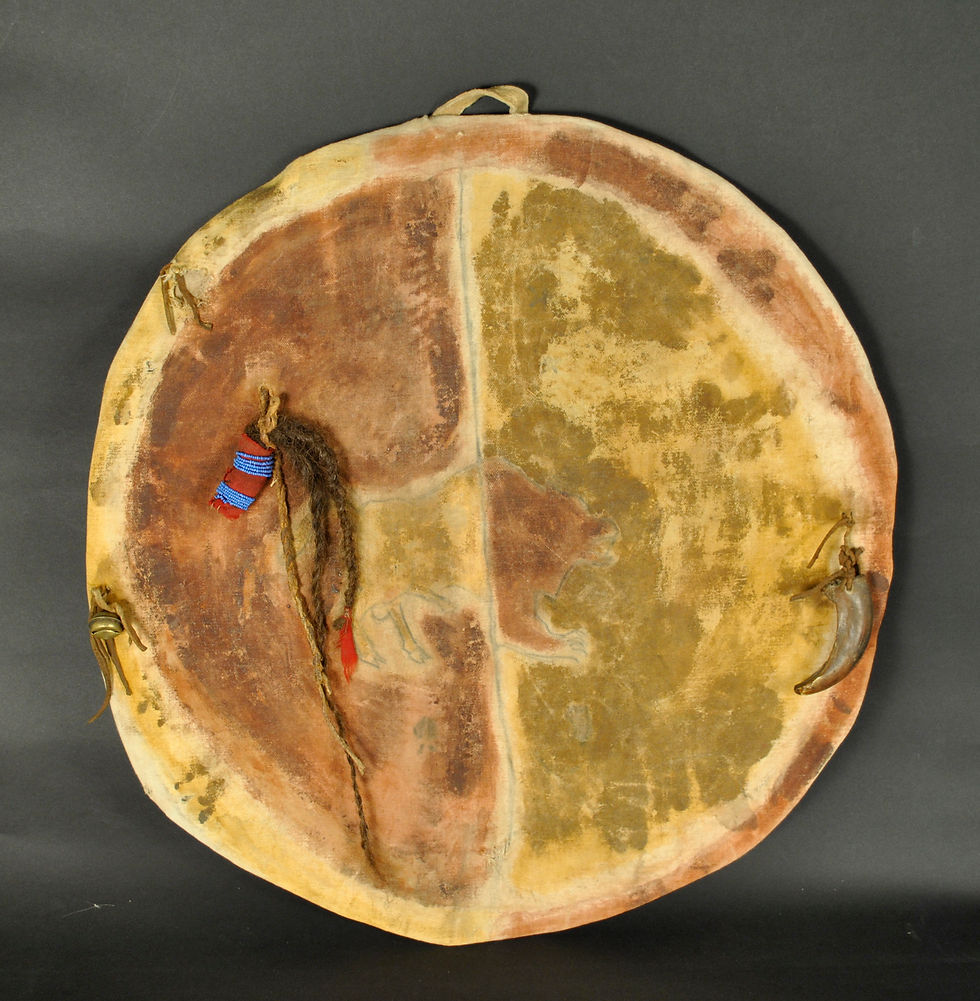
Grizzly Bear Shield ca.1870 Crow. Great Plains. wood, rawhide, paint, bear claw, horse hair 18.3" diameter
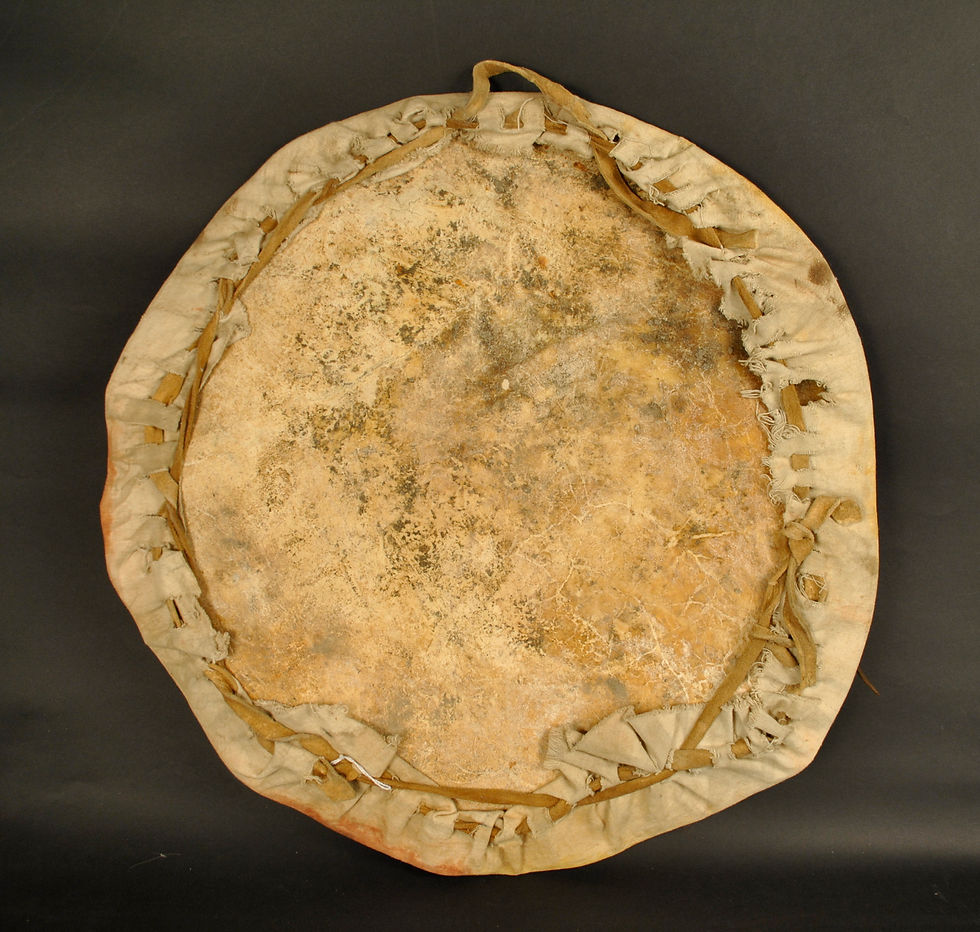
Grizzly Bear Shield ca.1870 Crow. Great Plains. wood, rawhide, paint, bear claw, horse hair 18.3" diameter

Grizzly Bear Shield ca.1870 Crow. Great Plains. wood, rawhide, paint, bear claw, horse hair 18.3" diameter
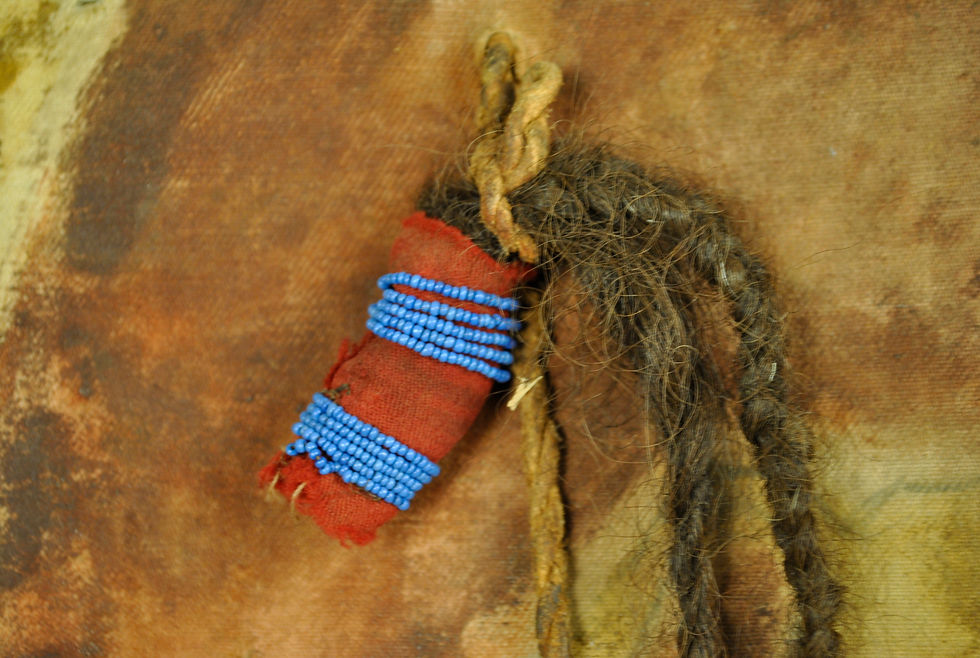
Grizzly Bear Shield ca.1870 Crow. Great Plains. wood, rawhide, paint, bear claw, horse hair 18.3" diameter

Grizzly Bear Shield ca.1870 Crow. Great Plains. wood, rawhide, paint, bear claw, horse hair 18.3" diameter

Buffalo Shield ca. 1850 Blackfeet. Great Plains rawhide, feathers, paint 21.5" diameter

Buffalo Shield ca. 1850 Blackfeet. Great Plains rawhide, feathers, paint 21.5" diameter

Buffalo Shield ca. 1850 Blackfeet. Great Plains rawhide, feathers, paint 21.5" diameter

Buffalo Shield ca. 1850 Blackfeet. Great Plains rawhide, feathers, paint 21.5" diameter
These protective shields reinforced the human connection with nature, the animal world, and the cosmos. Depending on the vision, some shields have images of grizzly bear claws, buffalo, thunderbirds, and representations of other powerful spirits.
The shields in this exhibition illustrate a variety of protective images including buffalo, eagles, and geometric designs. Early paintings on buffalo hide and later, on ledger drawings, portray warriors on horseback going into battle with their shields.
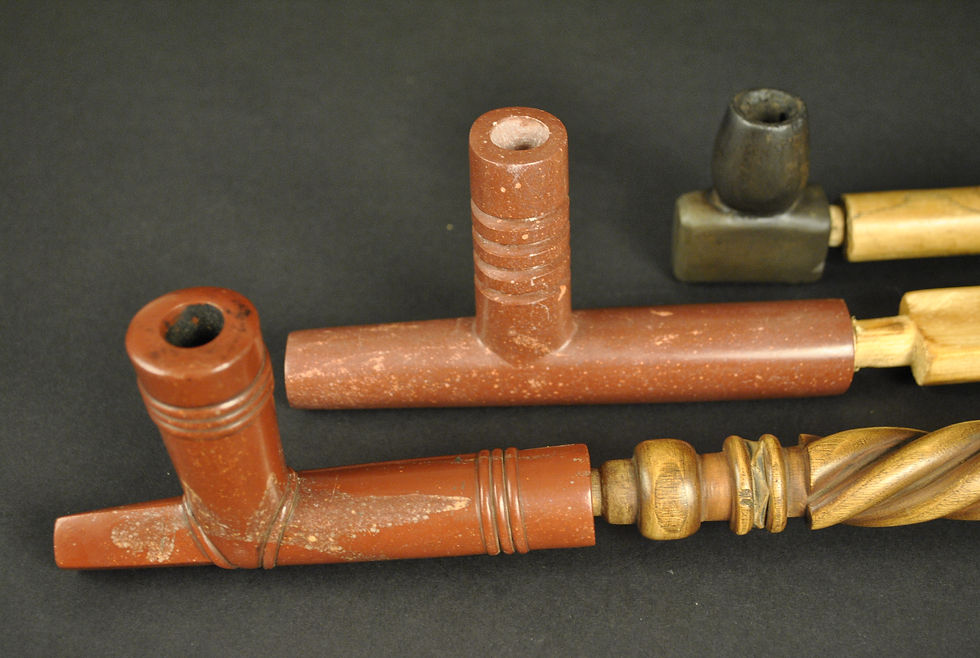
top to bottom: NAI.129.2010 NAI.42.2010 NAI.127.2010

Catlinite Pipe ca. 1810 Sioux. Great Plains. catlinite, wood, bone beads 24" x 3.25" x 1"
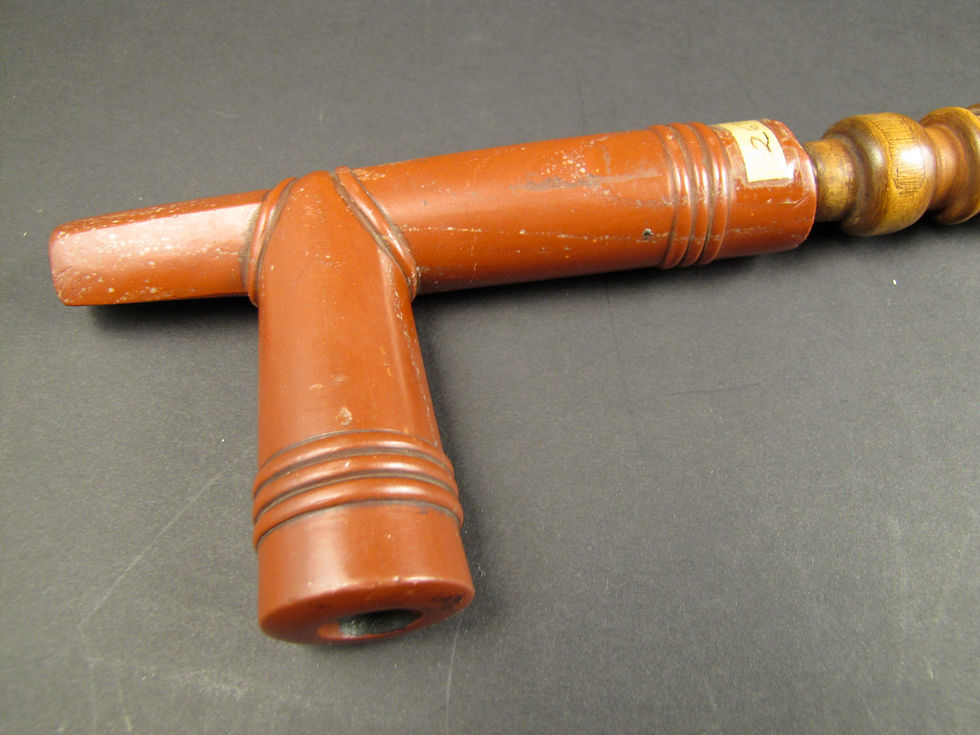
Catlinite Pipe ca. 1810 Sioux. Great Plains. catlinite, wood, bone beads 24" x 3.25" x 1"

Catlinite Pipe ca. 1810 Sioux. Great Plains. catlinite, wood, bone beads 24" x 3.25" x 1"

Catlinite Pipe ca. 1810 Sioux. Great Plains. catlinite, wood, bone beads 24" x 3.25" x 1"
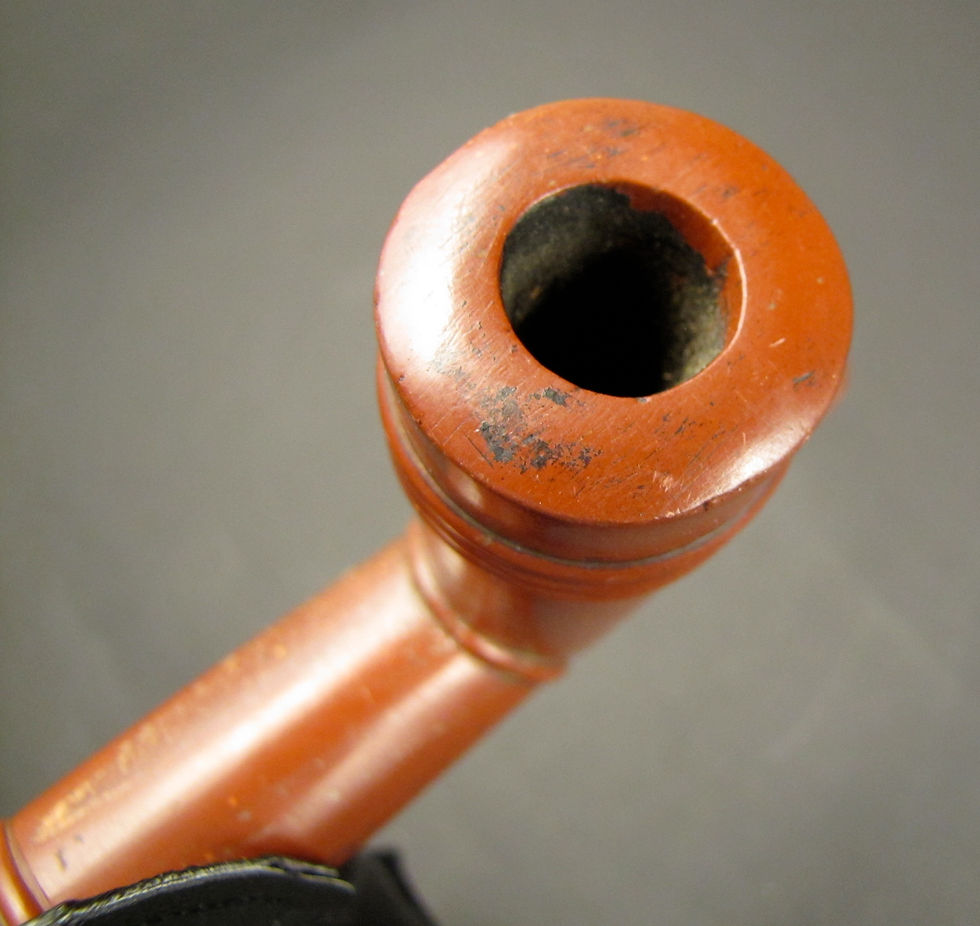
Catlinite Pipe ca. 1810 Sioux. Great Plains. catlinite, wood, bone beads 24" x 3.25" x 1"
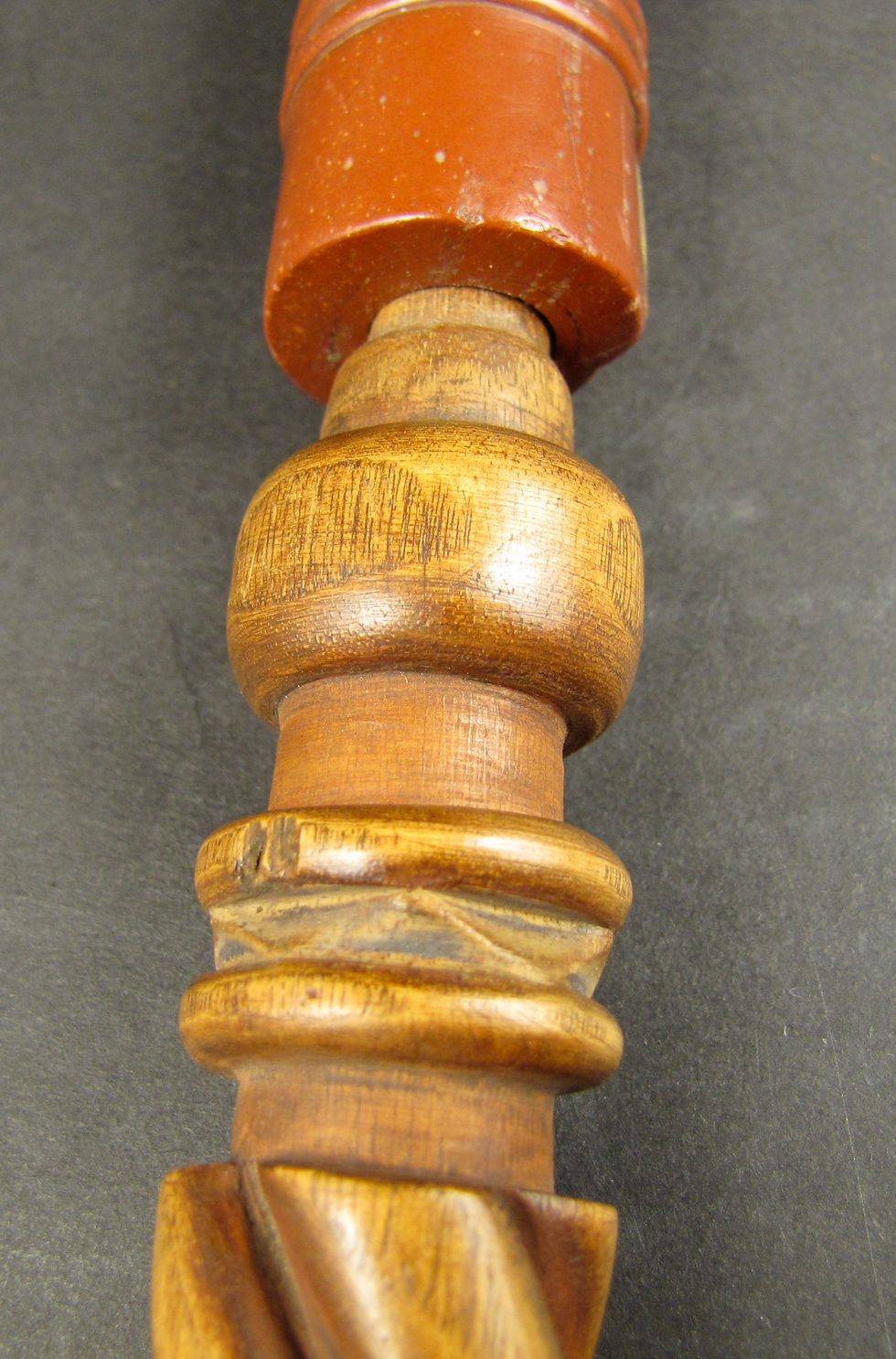
Catlinite Pipe ca. 1810 Sioux. Great Plains. catlinite, wood, bone beads 24" x 3.25" x 1"
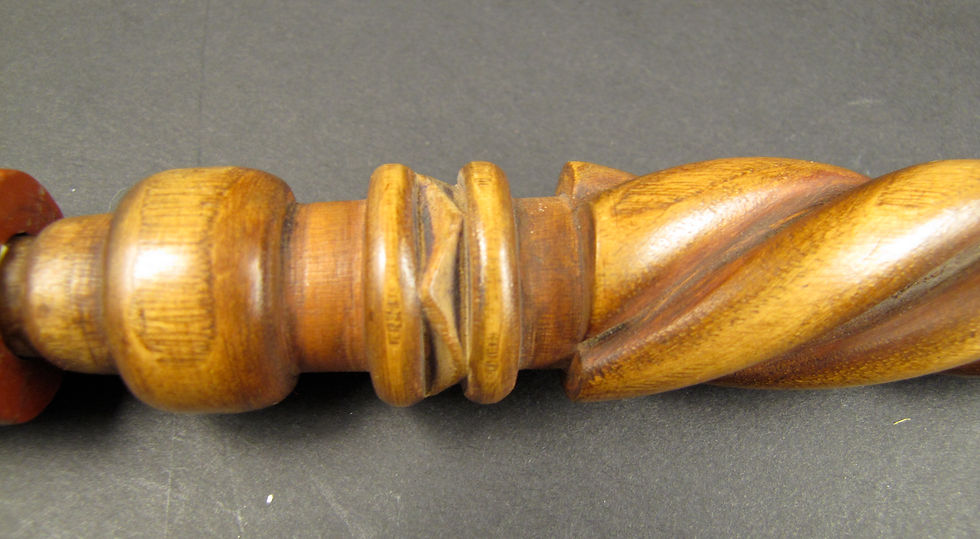
Catlinite Pipe ca. 1810 Sioux. Great Plains. catlinite, wood, bone beads 24" x 3.25" x 1"

Catlinite Pipe ca. 1810 Sioux. Great Plains. catlinite, wood, bone beads 24" x 3.25" x 1"
Pipes
There are three pipes in this exhibition. Two pipe bowls are made of red pipestone or catlinite in a style used extensively after 1860. The third and smaller pipe is made of soapstone.
All the stems are wooden, with limited decoration. The two catlinite pipes have not been used, but the soapstone pipe contains residue of ashes. They represent a long tradition of pipe making that continues to support Native American culture.
Smoking pipes and exchanging of tobacco played an important role in social, sacred and political ceremonies among most Native American groups in North America, but especially those of the Plains and Great Lakes regions.
Drawings by early Europeans frequently depict pipe ceremonies between different tribes and also with Europeans in formal meetings. Pipe ceremonies could signify welcome, an exchange of goods, or a political agreement. But for most Native Americans, using the pipe and smoking tobacco is also a sacred act connecting them with the greater spirit world.
Pipes are also cherished as part of a leader’s spiritual connection. The pipes have sacred meaning, attached to stories of their use. Many old pipes have long and important histories, passed from generation to generation.
The Pipestone National Monument in southwestern Minnesota preserves the area that was the source of the catlinite raw material used by native carvers for over five hundred years. Catlinite was traded extensively across the Plains and eastward through the Great Lakes tribes. Soapstone occurs in many areas around the Great Lakes and is still used for carving pipes, figures and other objects.
Drums
Drums, along with feather headdresses, are ethnographic objects that the public connects with Native American cultures. Drums are central to ceremonies, dances, and recognition of important moments in Native American life.
They connect with both the spiritual and the temporal parts of life and replicate in many ways natural sounds, from heartbeats to woodpeckers drumming on trees.
Native American drums vary in size and materials; they reflect the raw materials available in the region where they are made. Most important are the symbols painted on the drums, representing special animals, birds, or natural occurrences such as lightning or rain.
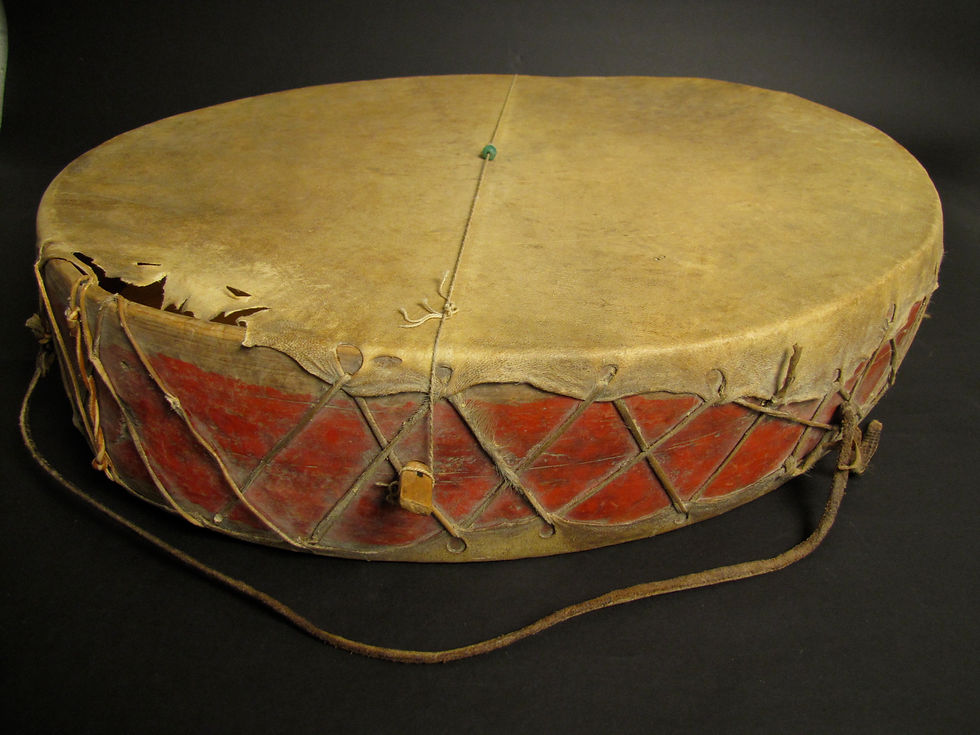
Drum ca. 1870 Crow. Great Plains. Wood. Hide. Paint. H4.25” x D23”

Drum ca. 1870 Crow. Great Plains. Wood. Hide. Paint. H4.25” x D23”

Drum ca. 1870 Crow. Great Plains. Wood. Hide. Paint. H4.25” x D23”

Drum ca. 1870 Crow. Great Plains. Wood. Hide. Paint. H4.25” x D23”

Drum ca. 1870 Crow. Great Plains. Wood. Hide. Paint. H4.25” x D23”

Drum ca. 1880-1900 Crow. Great Plains. Wood, Hide, Paint. H3.5” x D19”

Drum ca. 1880-1900 Crow. Great Plains. Wood, Hide, Paint. H3.5” x D19”
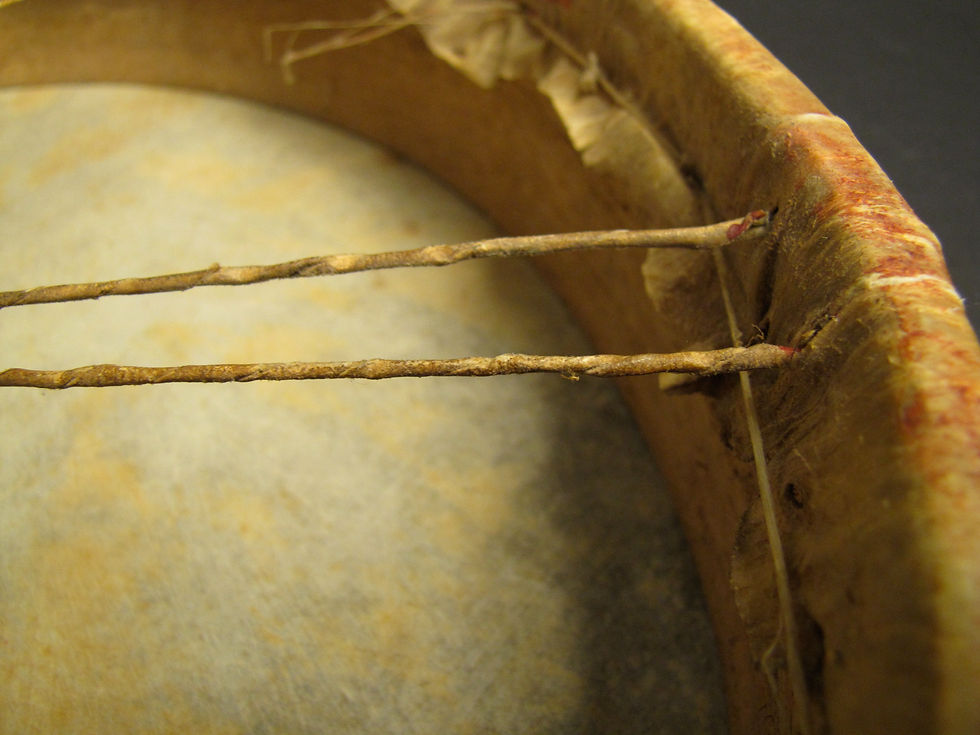
Drum ca. 1880-1900 Crow. Great Plains. Wood, Hide, Paint. H3.5” x D19”

Drum ca. 1880-1900 Crow. Great Plains. Wood, Hide, Paint. H3.5” x D19”
These symbols connect the drummer and other members of the tribe to the supernatural. They serve as an integrating force with the rhythm drawing the people together and reinforcing important cultural, spiritual, and community beliefs.
The drums in this collection illustrate the variety of drums made in the late 1800s and early 1900s. Native Americans continue to make drums and use them at all ceremonial occasions. They are still a very important part of modern Native American culture.

Headdress ca. 1880 Great Plains. Hide, Beads, Hawk Feathers. W12.5” x D10” x H17.5”
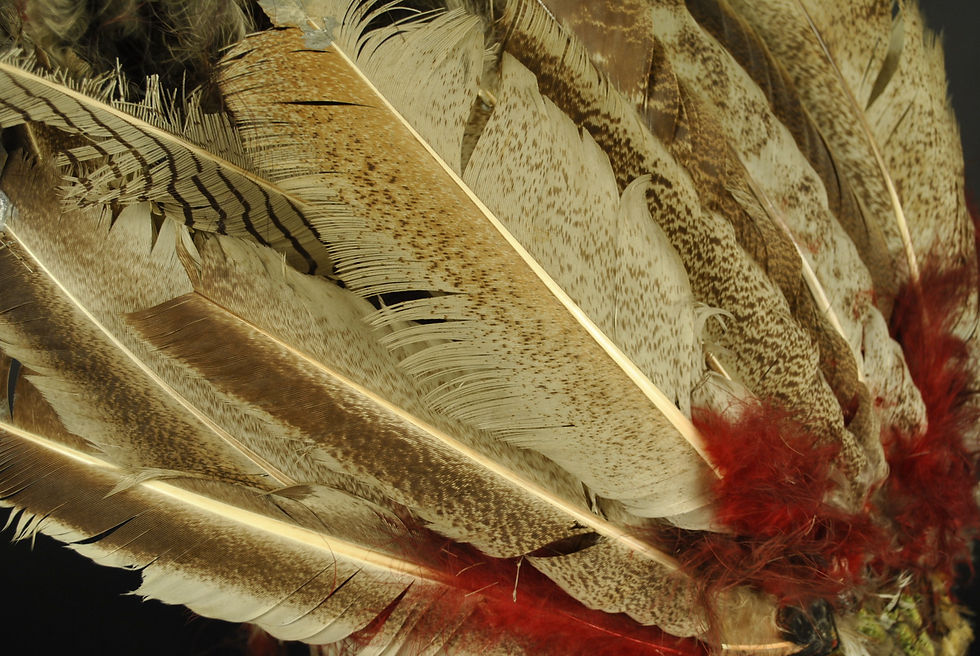
Headdress ca. 1880 Great Plains. Hide, Beads, Hawk Feathers. W12.5” x D10” x H17.5”
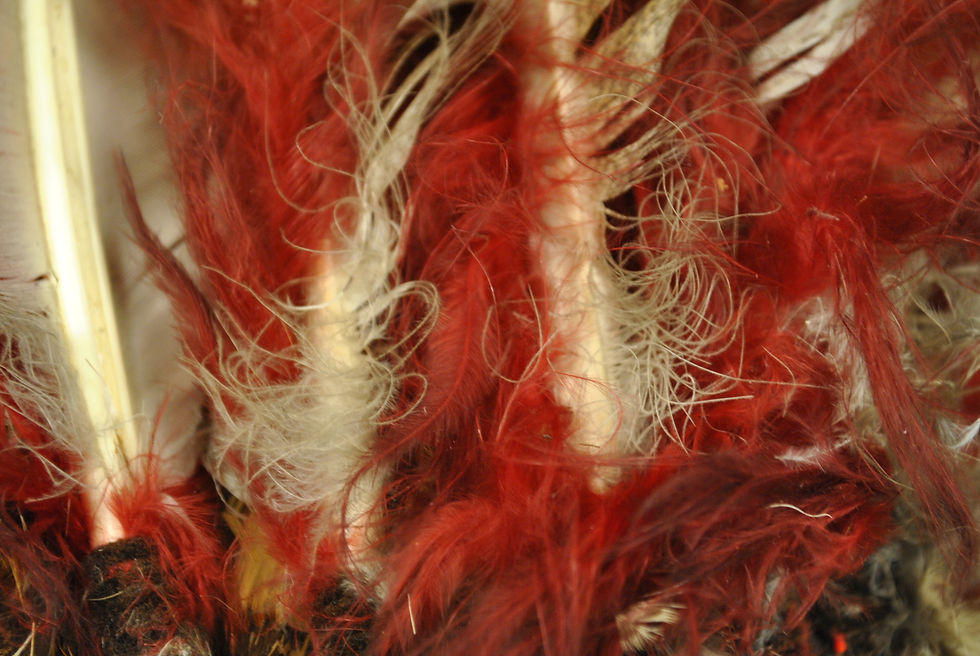
Headdress ca. 1880 Great Plains. Hide, Beads, Hawk Feathers. W12.5” x D10” x H17.5”

Headdress ca. 1880 Great Plains. Hide, Beads, Hawk Feathers. W12.5” x D10” x H17.5”
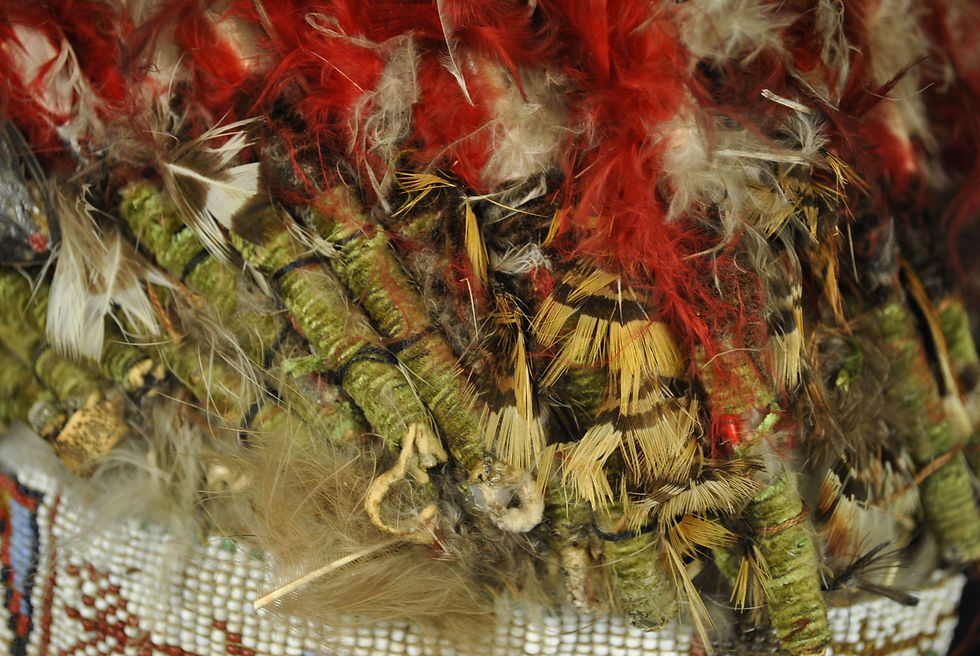
Headdress ca. 1880 Great Plains. Hide, Beads, Hawk Feathers. W12.5” x D10” x H17.5”
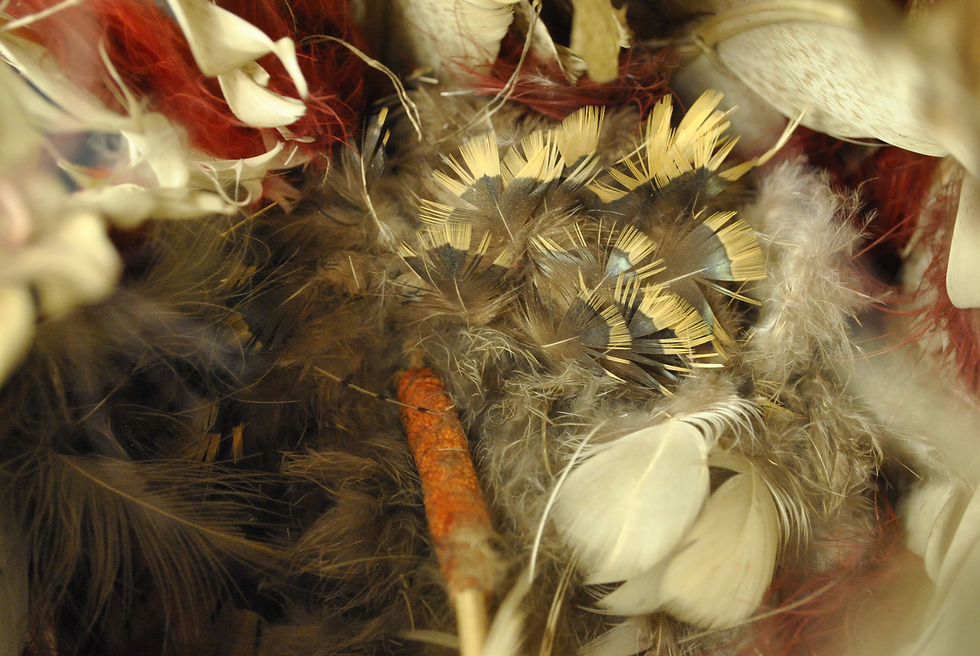
Headdress ca. 1880 Great Plains. Hide, Beads, Hawk Feathers. W12.5” x D10” x H17.5”
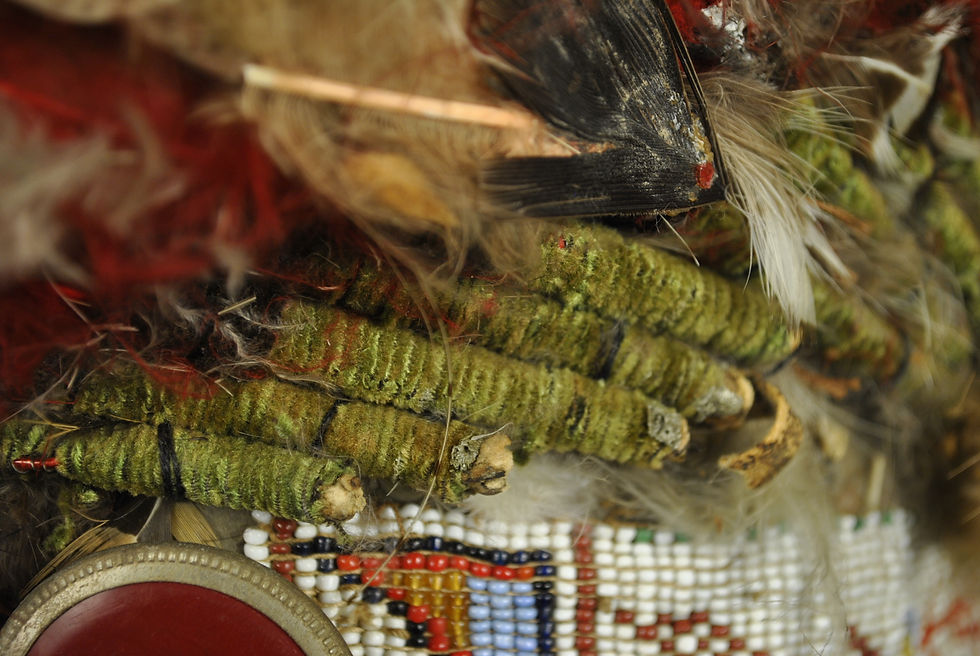
Headdress ca. 1880 Great Plains. Hide, Beads, Hawk Feathers. W12.5” x D10” x H17.5”
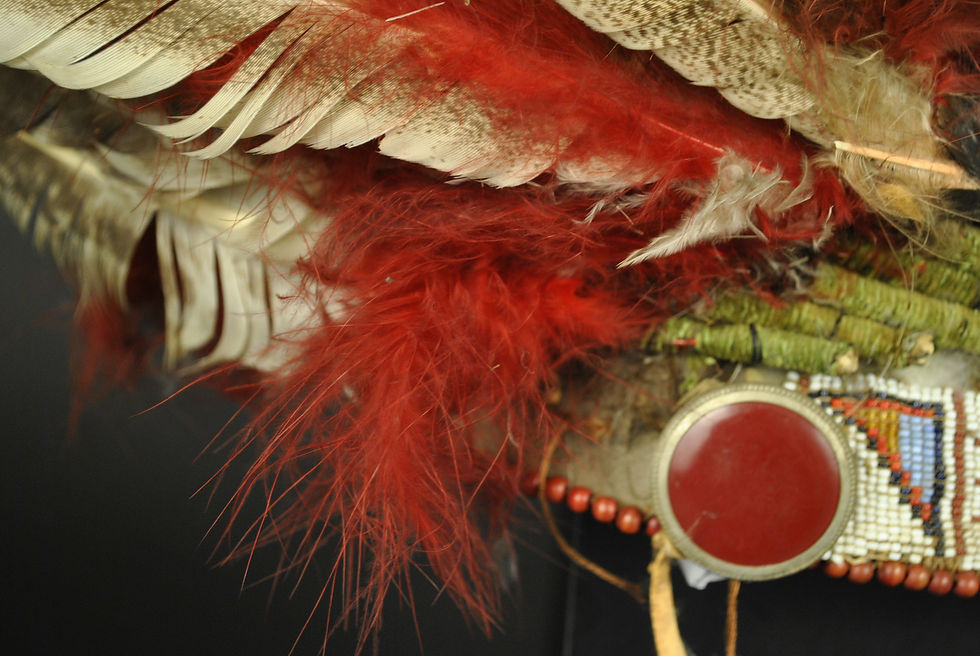
Headdress ca. 1880 Great Plains. Hide, Beads, Hawk Feathers. W12.5” x D10” x H17.5”
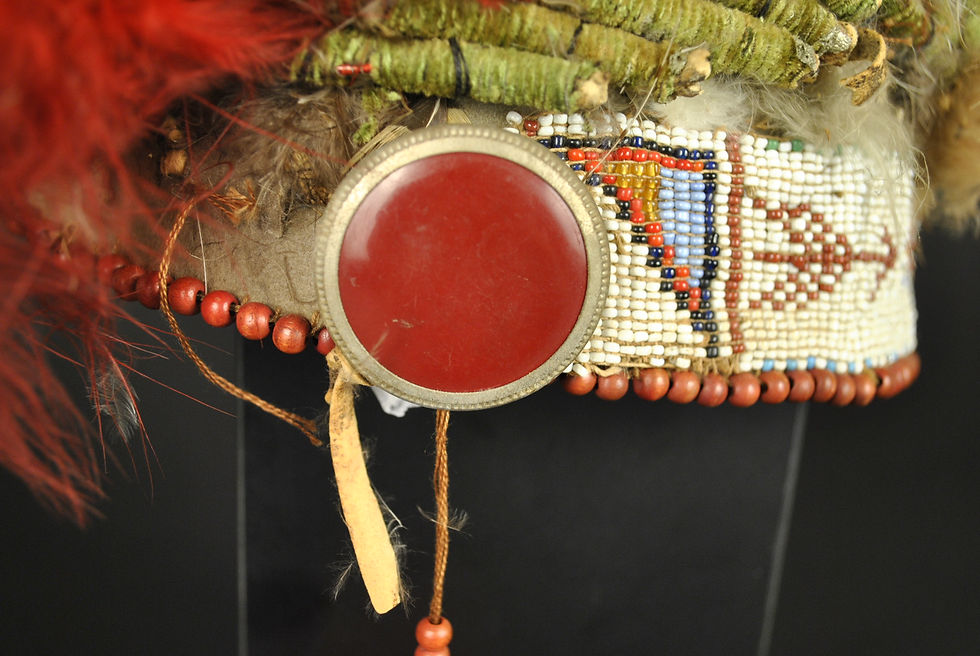
Headdress ca. 1880 Great Plains. Hide, Beads, Hawk Feathers. W12.5” x D10” x H17.5”
Headdresses
The style of headpieces varies by region and tribe; they include buffalo headdresses, buffalo horn headdresses, otter-fur turbans, roaches, and feathered headpieces.
Traditionally, the headpieces signified the status and major accomplishments of the men who wore them.
The long headdress made from eagle feathers is a prominent feature in representations of Plains Native Americans in history books, movies, and other non-Native popular culture. The actual variety of the long feathered headdresses reflected the choice of the owner and the raw materials available.
Traditionally, important chiefs wore the long trailing type, with eagle feathers descending nearly to the ground, for tribal ceremonies.
The shorter headdresses, called “straight-up” headpieces, were traditionally also made of eagle feathers, but the feathers were more upright, surrounding a cap covered with small feathers and bordered with beading. Roach headdresses were a widely used form of headpiece; they were used in battle and at ceremonies. Roach headpieces are still worn as regalia by male dancers at pow wows and other tribal gatherings.
The two types of headdresses in this exhibition are the short, modified straight-up headdress and the two roach headdresses. Both types demonstrate the uses and different types of style and construction. This straight-up headdress dates from about 1880 and is made of hawk feathers with the headpiece band trimmed with glass beads and small medallions. The binding on the feathers is a type of velvet traded in the southern Plains—probably scraps from a woman’s skirt. The cap behind the feathers is covered with down from the hawk; the small red feathers are dyed. Both the dyed feathers and the medallions were likely added later.
Although eagle feathers were considered the most important to honor the man who wore the headdress, hawk feathers were also prized and often used when eagles were not plentiful. Feathers from several birds are on this headpiece, and they are possibly from rough-legged hawks, prevalent in the western Plains. These two roach headdresses have intricate designs using hide, fabric, feathers, and animal hair. The animal hair is very stiff, probably porcupine guard hair and deer tail. The hair is dyed and attached to a leather base so the hair will stand straight up like a crest. The headdresses are also decorated with beads and quillwork. Native American men attach the roach to the head either by a leather strap worn under the chin or directly to the their hair.
Moccasins
There are two pairs of beaded moccasins in this exhibition, one pair for an adult and the other for a child.
The adult moccasins were probably made by Sioux women and given as a gift to honor someone. Tradition says the person who received the gift was to dance so hard as to wear off the beads on the soles. The styles and patterns vary according to tribe. These moccasins are made of tanned hide decorated with glass beads.
The child’s moccasins have a patriotic theme and were probably made either as a gift or for sale to the public. They are also carefully crafted with glass beads.

Child’s Moccasins ca. 1890-1920 Sioux. Great Plains. Leather, Beads. a&b: L6. x W3.25” x H2”
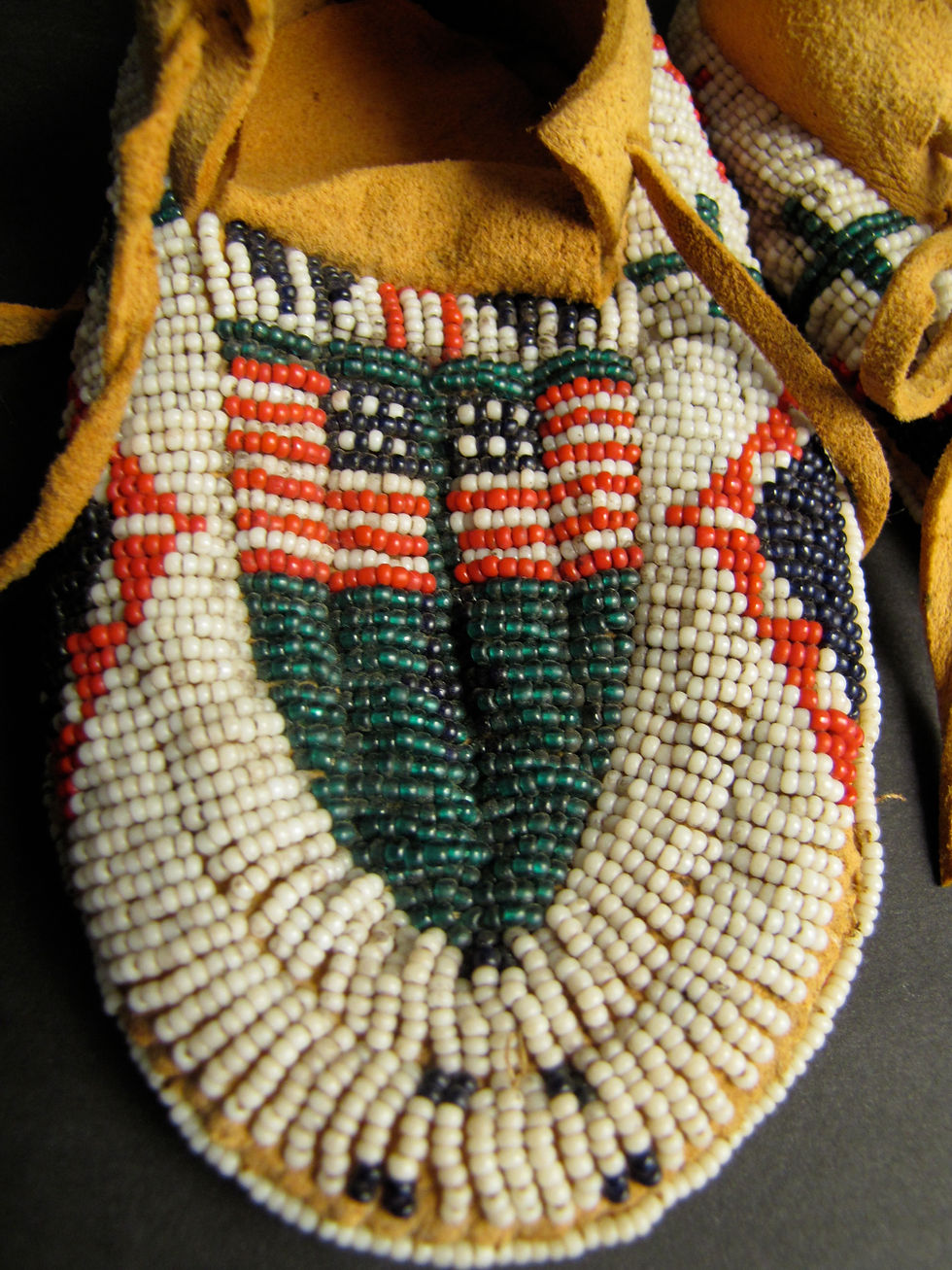
Child’s Moccasins ca. 1890-1920 Sioux. Great Plains. Leather, Beads. a&b: L6. x W3.25” x H2”

Child’s Moccasins ca. 1890-1920 Sioux. Great Plains. Leather, Beads. a&b: L6. x W3.25” x H2”
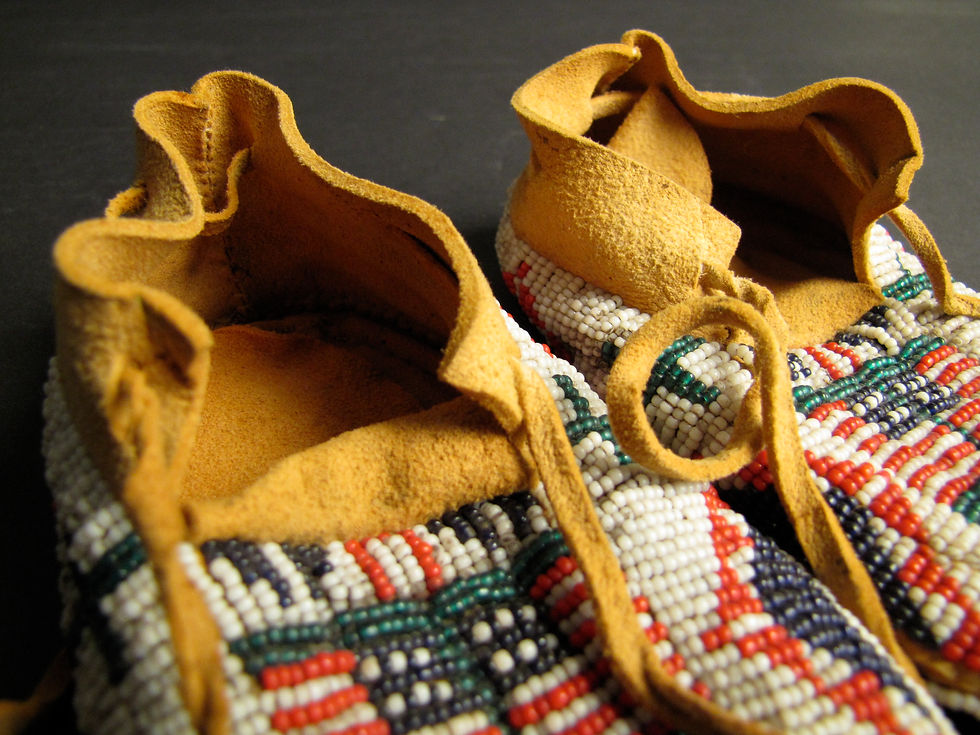
Child’s Moccasins ca. 1890-1920 Sioux. Great Plains. Leather, Beads. a&b: L6. x W3.25” x H2”

Child’s Moccasins ca. 1890-1920 Sioux. Great Plains. Leather, Beads. a&b: L6. x W3.25” x H2”

Child’s Moccasins ca. 1890-1920 Sioux. Great Plains. Leather, Beads. a&b: L6. x W3.25” x H2”

Child’s Moccasins ca. 1890-1920 Sioux. Great Plains. Leather, Beads. a&b: L6. x W3.25” x H2”
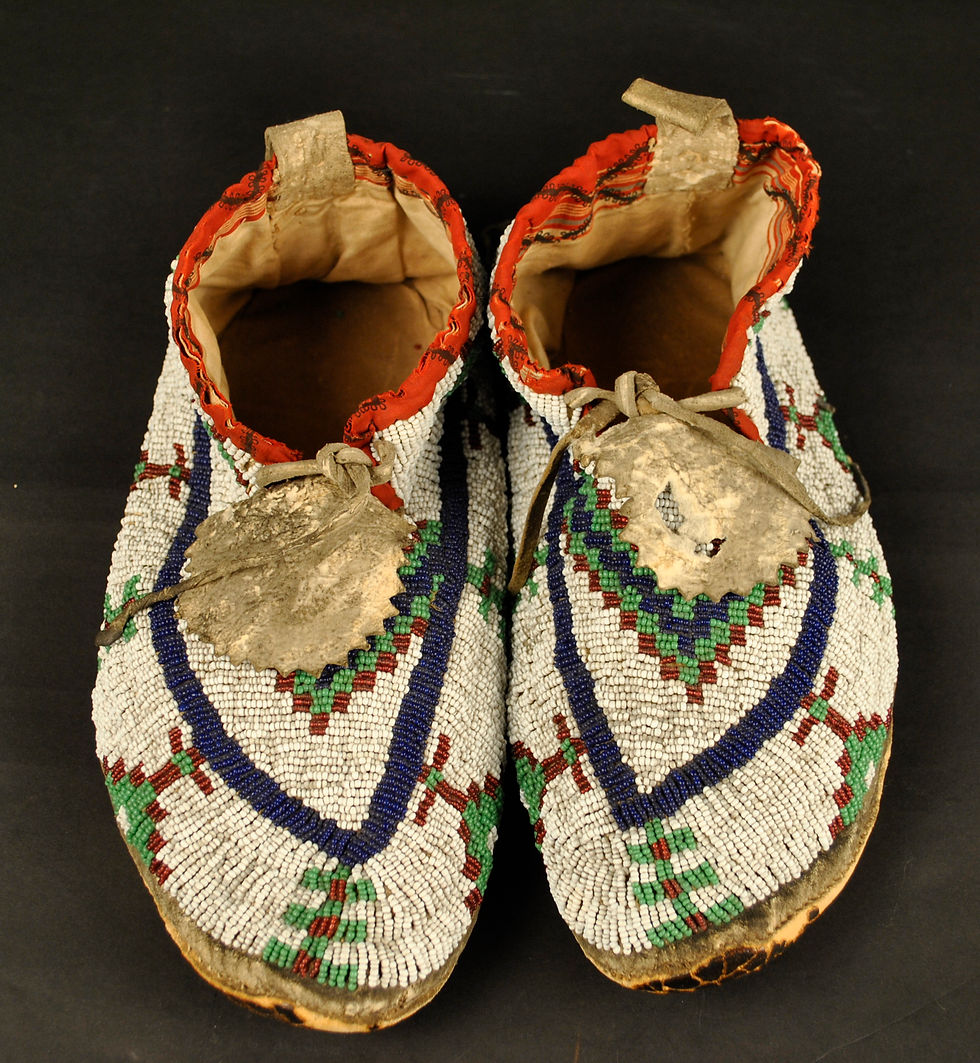
Moccasins ca. 1880 Sioux. Great Plains. Leather, Beads. a&b: 11” x 4.5” x 3”
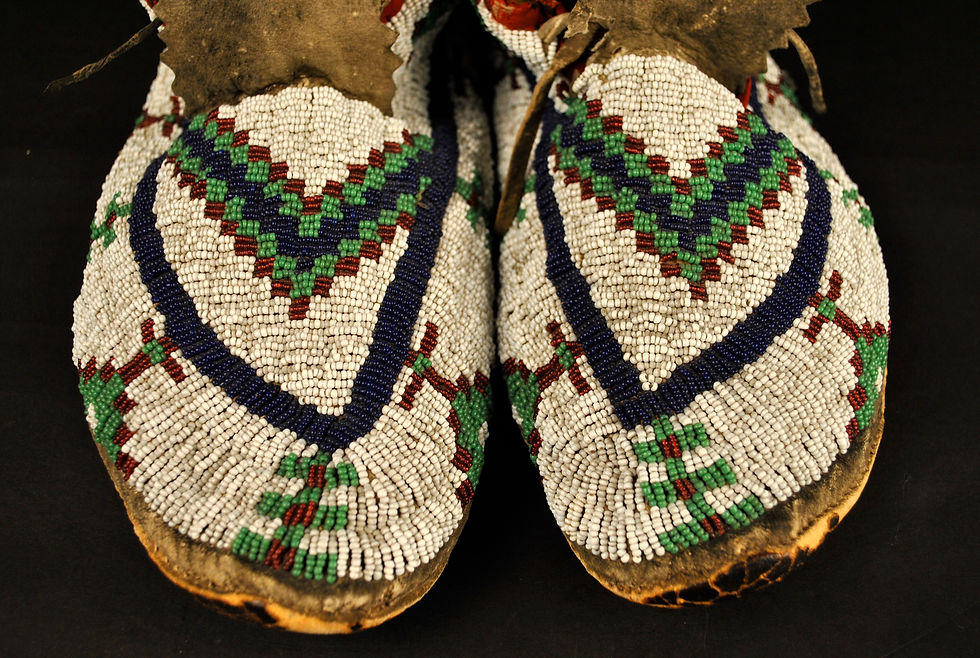
Moccasins ca. 1880 Sioux. Great Plains. Leather, Beads. a&b: 11” x 4.5” x 3”
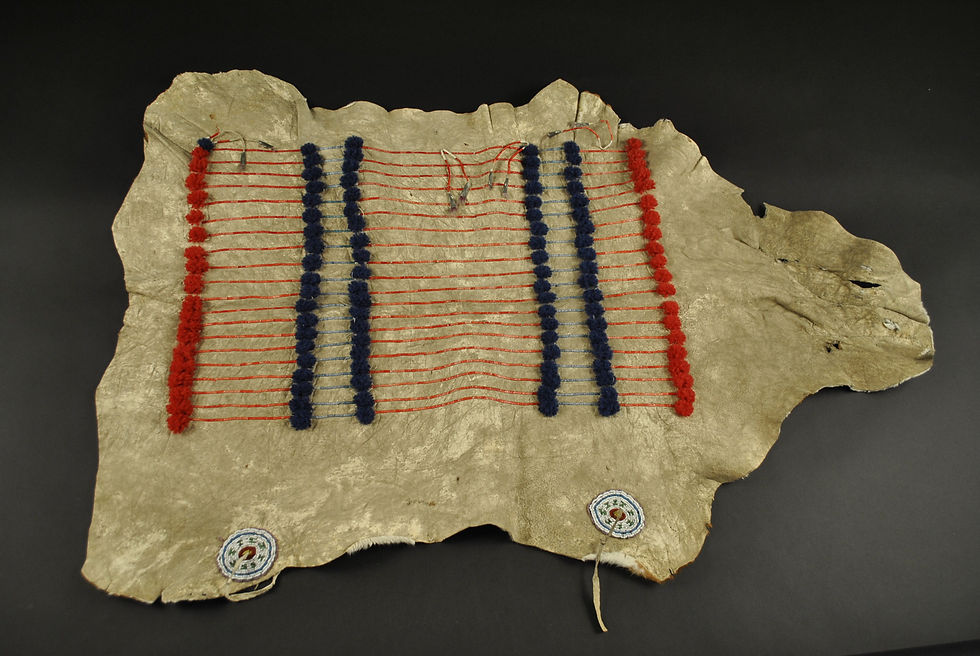
Puberty Robe ca. 1890 Sioux. Great Plains. Hide, Porcupine Quills, Yarn. W40.5” x H28.25”
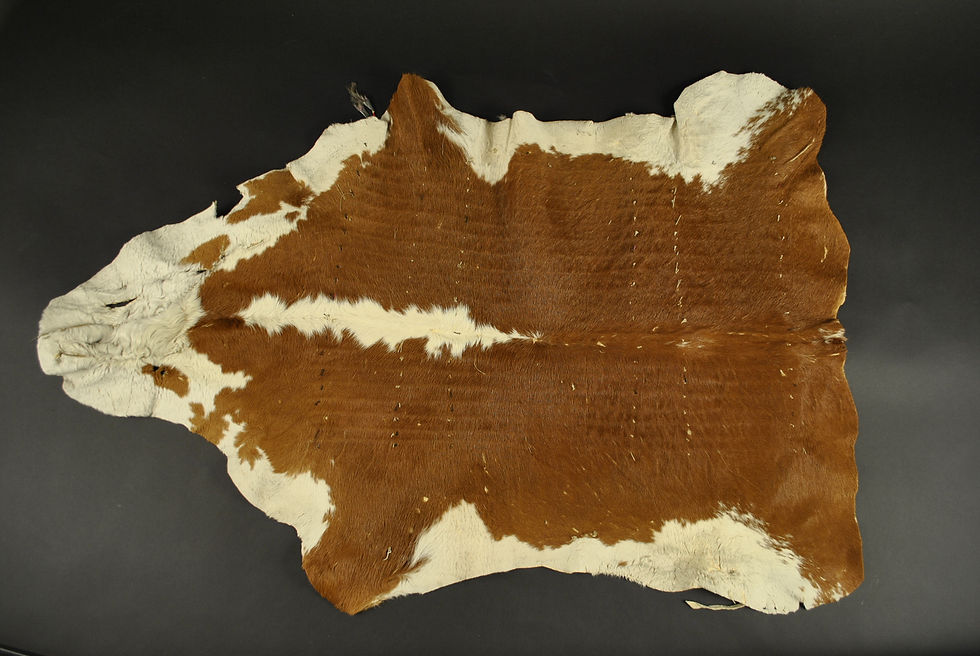
Puberty Robe ca. 1890 Sioux. Great Plains. Hide, Porcupine Quills, Yarn. W40.5” x H28.25”

Puberty Robe ca. 1890 Sioux. Great Plains. Hide, Porcupine Quills, Yarn. W40.5” x H28.25”

Puberty Robe ca. 1890 Sioux. Great Plains. Hide, Porcupine Quills, Yarn. W40.5” x H28.25”

Puberty Robe ca. 1890 Sioux. Great Plains. Hide, Porcupine Quills, Yarn. W40.5” x H28.25”
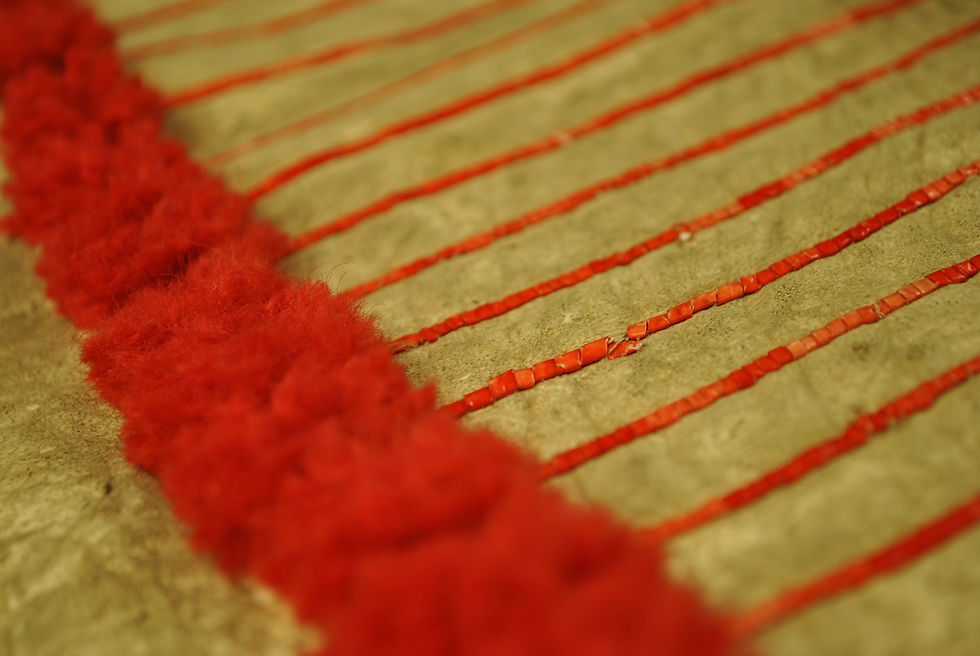
Puberty Robe ca. 1890 Sioux. Great Plains. Hide, Porcupine Quills, Yarn. W40.5” x H28.25”

Puberty Robe ca. 1890 Sioux. Great Plains. Hide, Porcupine Quills, Yarn. W40.5” x H28.25”
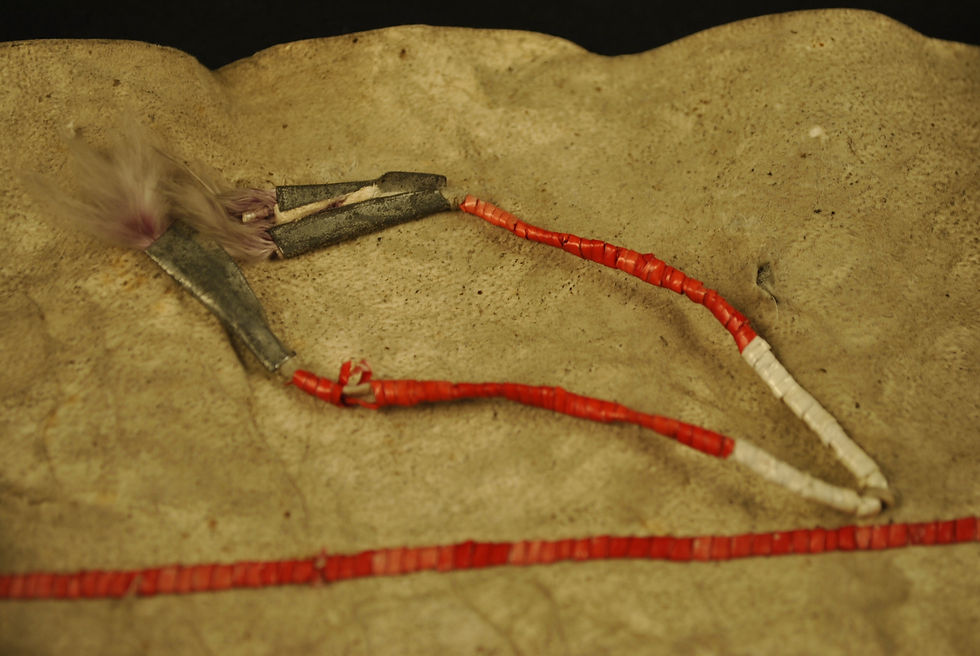
Puberty Robe ca. 1890 Sioux. Great Plains. Hide, Porcupine Quills, Yarn. W40.5” x H28.25”
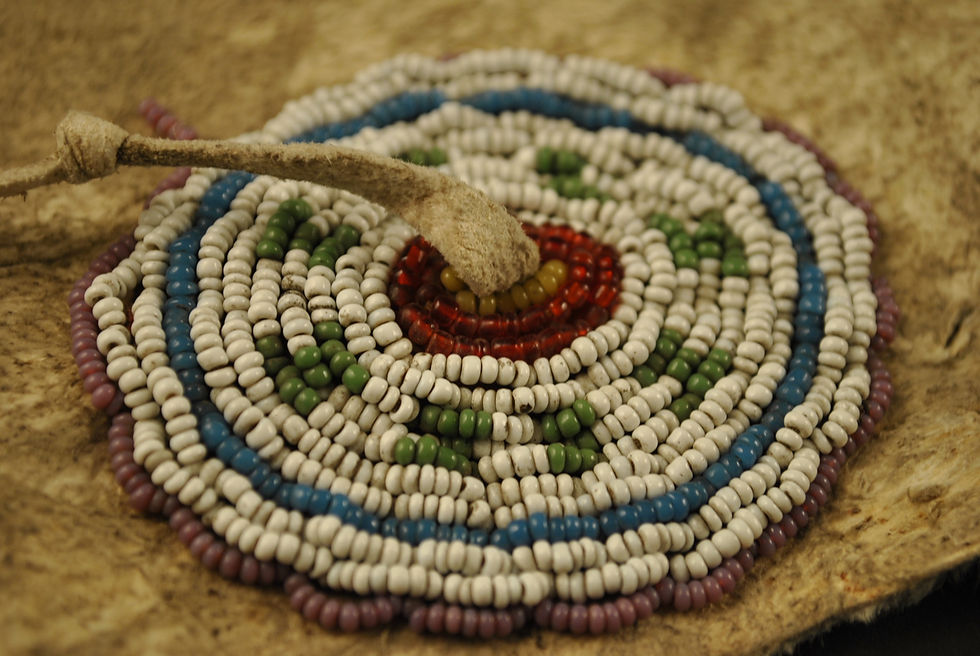
Puberty Robe ca. 1890 Sioux. Great Plains. Hide, Porcupine Quills, Yarn. W40.5” x H28.25”
Robes
Tanning hides is a very labor-intensive work. In most tribes the women did the tanning, and on the Plains, with buffalo hides, a women could tan about ten hides a year. It was a highly valued skill, honed over many years.
There were many stages in the process; after cleaning and soaking the hide many times, the hides were stretched and re-stretched. The extent depended on the animal and if the hair was to be removed. Once it was cleaned and stretched it was carefully treated with a brain-tanning mixture which was worked into the hide with blunt-edge tools made of bone, horn, wood, or metal.
The mixture was made of cooked brain that was pounded into a mush. Tanners often had their own formulas and added other ingredients to the mush.
After the hide was treated it was smoked, by hanging it over a fire that produced lots of smoke. The type of wood burned produced different kinds of smoke, which in turn gave the hides different shades from light tan to brown. After the hide was dried it was rolled and stored, and the decorations were added later. The tanned hides were of great value, for use as robes and other apparel, as parts of tipis, and for trade.



